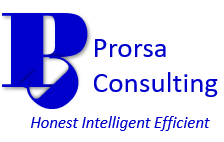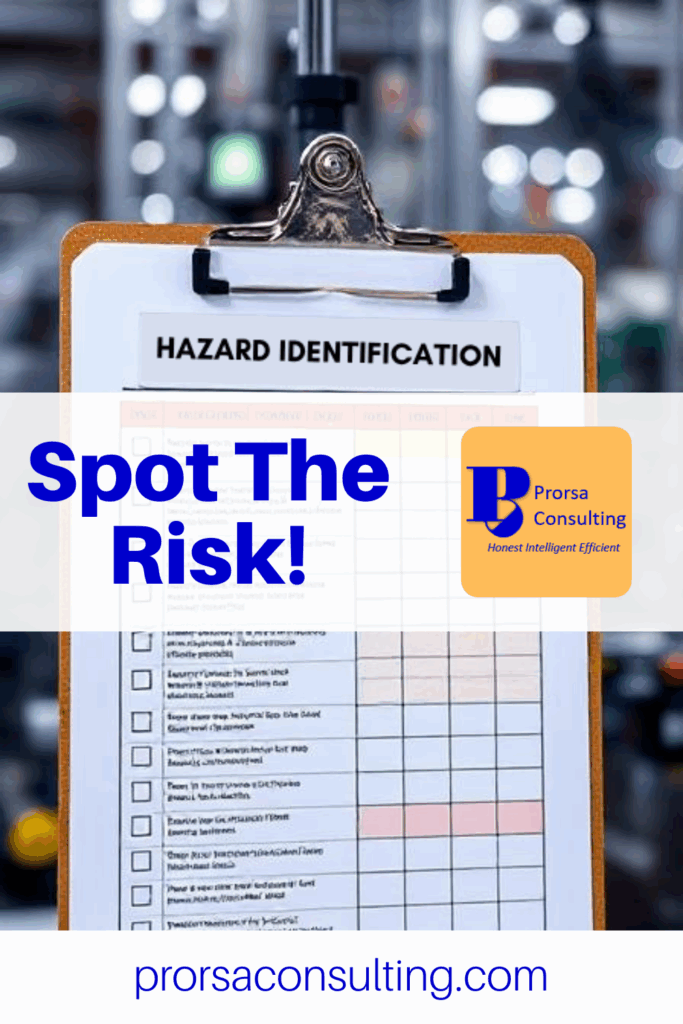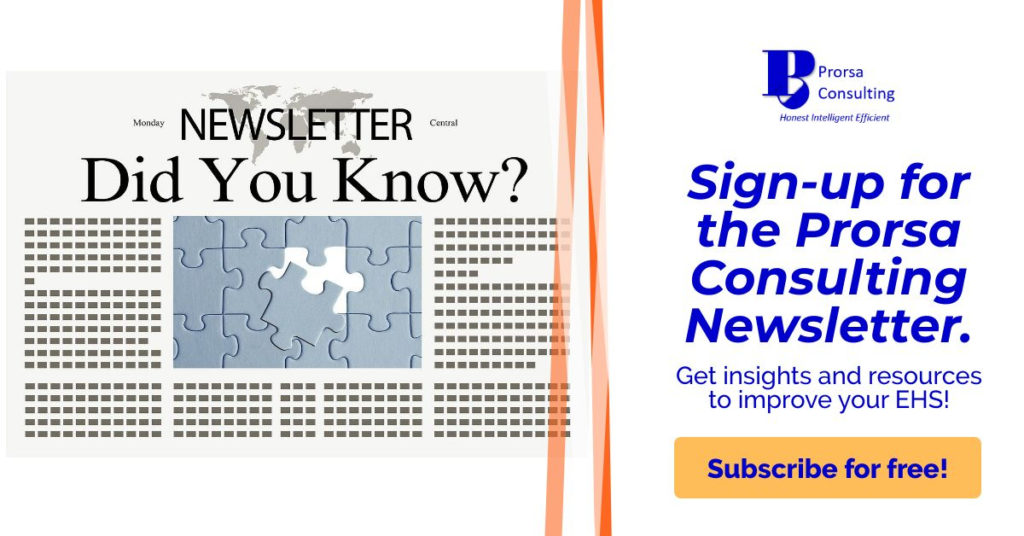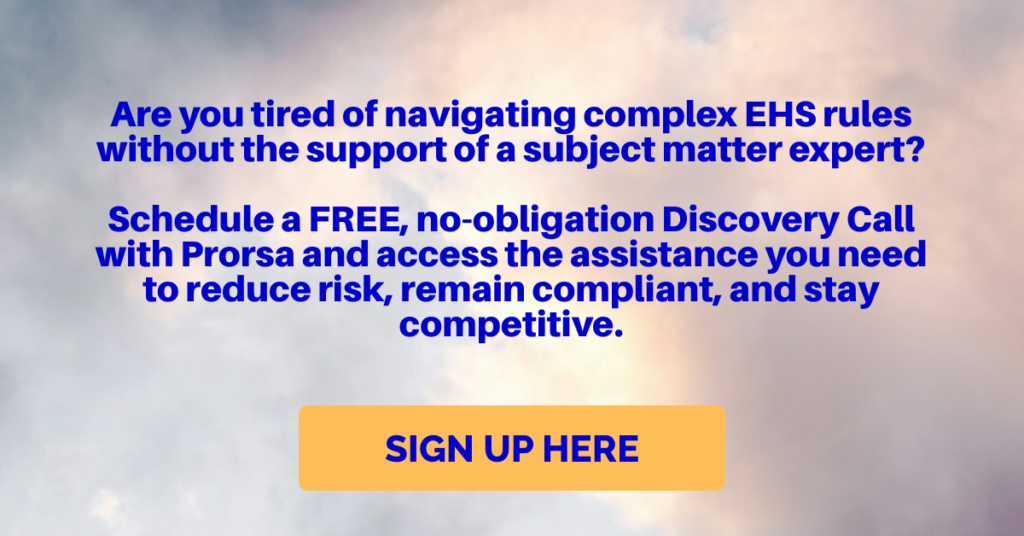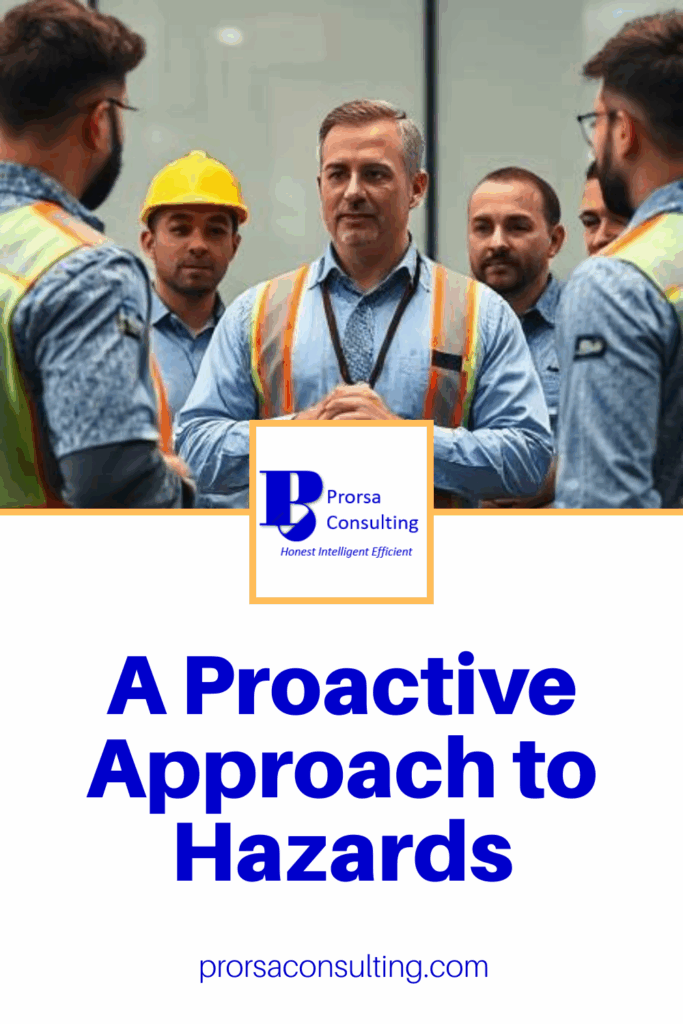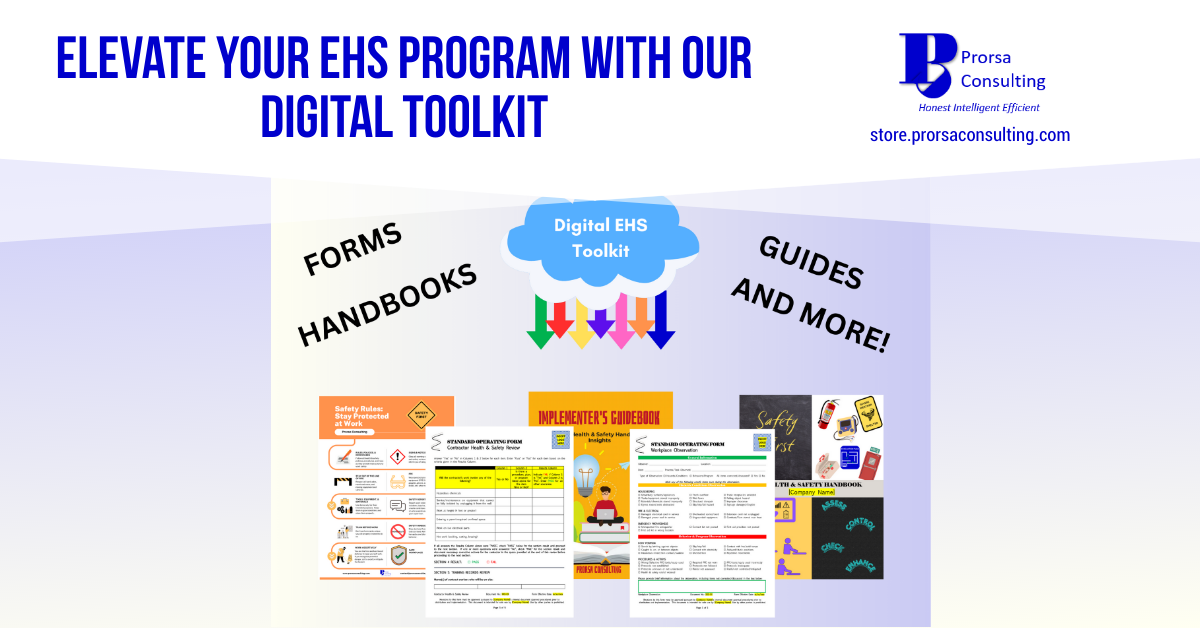Common Hazard Identification Challenges Faced by Small Operations (And How to Fix Them)
By : Admin -

Common hazard identification challenges include inadequate training, limited resources, and poor communication.
Each one of these makes it harder for small manufacturing facilities to spot and address risks before they become problems. Likewise, the identified challenges can lead to incidents, regulatory headaches, and costly disruptions for small and mid-sized manufacturers. Yet, overcoming these obstacles and building a safer, more productive workplace is possible with the right approach.
This article explores the most frequent hazard identification challenges and provides practical solutions to help your business stay ahead of risks.
Hazard Identification Challenges: Why They Matter
Hazard identification is not just a regulatory requirement. It is the foundation of a safe and successful manufacturing operation. Effective hazard identification means spotting risks before they turn into costly accidents, fines, or disruptions for small and mid-sized facilities. When hazards go unnoticed or unaddressed, even minor oversights can escalate into serious incidents, threatening employee well-being and business continuity.
Manufacturing environments are dynamic, with new equipment, processes, and materials introduced regularly. This constant change creates evolving risks that must be managed proactively. Oftentimes, small operations lack the dedicated safety teams or extensive resources found in larger companies, making it even more critical to have robust hazard identification practices. Recognizing and addressing challenges early helps ensure compliance, protect your workforce, and maintain smooth operations.
Regulatory agencies like OSHA expect every workplace to identify and control hazards effectively. Furthermore, by prioritizing hazard identification, you meet legal requirements and demonstrate a commitment to your employees’ safety and your company’s long-term success. When risk recognition is taken seriously, it fosters a culture of safety where everyone feels a duty to spot and report potential dangers.
Common Hazard Identification Challenges in Small Manufacturing
Every manufacturing facility faces unique risks, but small operations often encounter specific hazard identification challenges that can undermine safety and efficiency. Recognizing these common obstacles is the first step toward building a safer workplace.
-
Inadequate Employee Training and Awareness
Many small manufacturing facilities struggle with gaps in safety training. When employees are not adequately educated on workplace dangers, they may not recognize hazards or understand how to report them. Moreover, this lack of awareness creates blind spots, leaving risks unaddressed until an incident occurs. Even experienced workers may overlook new or evolving hazards if they are not regularly updated on safety protocols.
-
Limited Resources for Safety Programs
Small operations frequently operate with tight budgets and lean staffing. These limitations can make investing in comprehensive safety programs, advanced hazard detection tools, or outside expertise difficult. As a result, hazard identification may be less thorough or rely on outdated methods, increasing the likelihood that risks will go unnoticed.
-
Lack of Formal Risk Assessment Processes
Without structured processes for identifying and evaluating hazards, small manufacturers may rely on informal or ad hoc approaches. Inconsistency can lead to incomplete hazard assessments and missed opportunities to prevent accidents. Yet, formal risk assessment workflows help ensure that all potential risks are systematically reviewed and addressed.
-
Poor Communication and Feedback Loops
Effective hazard identification depends on open communication between management and staff. When employees hesitate to report hazards or do not receive feedback on their concerns, significant risks may be ignored. Thus, establishing clear channels for reporting and responding to hazards is essential for maintaining a proactive safety culture.
-
Overlooking New or Evolving Hazards
Manufacturing environments constantly change, with new equipment, materials, and processes introduced regularly. New risks may emerge unnoticed if hazard assessments are not updated to reflect these changes. As such, staying vigilant and regularly reviewing hazard identification practices helps prevent surprises and keeps safety efforts current.
-
Inconsistent Enforcement and Accountability
When safety rules are not enforced consistently, especially for contractors or temporary workers, gaps in hazard identification can develop. Likewise, mixed messages about safety priorities can erode trust and discourage employees from taking hazard identification seriously. Consistent enforcement and clear accountability help ensure that everyone is empowered in maintaining a safe workplace.
-
Inadequate Documentation and Recordkeeping
Accurate documentation is crucial for tracking hazards, corrective actions, and compliance efforts. Disorganized or incomplete records also make identifying patterns, monitoring progress, or demonstrating compliance during inspections problematic. Implementing reliable recordkeeping systems helps small manufacturers stay on top of hazard identification and continuous improvement.
The Consequences of Unaddressed Hazard Identification Challenges
When hazard identification challenges are ignored or inadequately addressed, the results can be severe and far-reaching for small and mid-sized manufacturing facilities. The most immediate impact is an increased risk of workplace incidents and injuries. Without effective hazard identification, employees may be exposed to unsafe conditions, leading to preventable events that harm individuals and disrupt operations.
Financial consequences also follow closely behind. Incidents often result in costly fines from regulatory agencies, not to mention potential legal fees, mitigation costs, and increased insurance premiums. Additionally, downtime caused by injuries or investigations can further strain limited resources, affecting productivity and profitability. In some cases, repeated safety violations or high-profile occurrences may damage a company’s reputation, making it harder to attract and retain customers and skilled workers.
Employee morale and retention can suffer as well. Workers who feel unsafe or believe management does not prioritize their well-being are more likely to leave or disengage. Furthermore, turnover not only affects team cohesion but also increases recruitment and training costs. Over time, a workplace culture that tolerates incomplete or ineffective hazard identification may struggle to maintain high safety and performance standards.
Finally, failing to address hazard identification challenges can put a facility at risk of non-compliance with regulatory requirements. Regulatory agencies expect manufacturers to identify and control hazards proactively. Moreover, falling short of these expectations invites enforcement actions and undermines the trust employees and stakeholders place in the organization.
By understanding these consequences, small and mid-sized manufacturing leaders can appreciate the importance of robust hazard identification practices. Furthermore, they can comprehend the value of investing in solutions that keep their workplaces safe, compliant, and productive.
Practical Solutions to Overcome Hazard Identification Challenges
Addressing hazard identification challenges in small and mid-sized manufacturing facilities is about more than just avoiding problems . . . It’s about building a proactive, safety-first culture that benefits everyone.
Here are actionable solutions tailored to the unique needs of smaller operations:
-
Invest in Comprehensive Employee Training
Regular, engaging training is essential for keeping employees aware of hazards and confident in their ability to recognize and report them. Scenario-based sessions help workers understand real-world risks, while ongoing refreshers ensure that new hazards are not overlooked. Training should be required for all employees, including new hires, and should emphasize the importance of speaking up about potential dangers.
-
Leverage Available Resources and Technology
Even with limited budgets, small manufacturers can leverage free or low-cost digital tools for hazard tracking and reporting. Partnering with local safety councils or industry groups can provide access to expertise and the best practices. Additionally, prioritizing safety investments, such as upgrading equipment or implementing user-friendly reporting systems, can significantly improve hazard identification and reduce risks.
-
Implement Formal Risk Assessment Processes
Establishing structured workflows for hazard identification ensures that no risks are missed. Using standardized checklists and templates helps teams systematically evaluate workplaces for hazards. Likewise, regular hazard reviews keep safety efforts current and effective, especially after operational changes.
-
Foster Open Communication and Feedback
Creating an environment where employees feel unafraid to report hazards is critical. Encourage open dialogue in team meetings and provide anonymous reporting options if needed. Moreover, management should respond promptly and transparently to feedback, demonstrating that every concern is taken seriously.
-
Stay Proactive About New and Evolving Hazards
Manufacturing environments are continually changing. Regularly update hazard assessments to reflect new equipment, materials, or processes. Additionally, employees should be involved in identifying emerging risks, as frontline workers often notice hazards first. Staying informed about industry trends and rule updates also helps keep safety practices relevant.
-
Ensure Consistent Enforcement and Accountability
Safety rules should apply to everyone, including contractors and temporary workers. Regular audits and spot checks reinforce the importance of hazard identification. Furthermore, recognizing and rewarding safe behaviors can motivate employees to stay vigilant and engaged in safety efforts.
-
Improve Documentation and Recordkeeping
Centralizing hazard reports and corrective actions in a digital system makes it easier to track progress and identify trends. Likewise, establishing clear retention policies and backing up records ensures that important information is never lost. Regular documentation reviews help small manufacturers stay compliant and continuously improve their safety programs.
By implementing these practical solutions, small and mid-sized manufacturers can overcome common hazard identification challenges, reduce risks, and create safer, more productive workplaces for everyone.
Hazard Identification Challenges Related Articles
Workplace Safety Responsibility: Who’s Really on the Hook?
Shielding Success: The Vital Role of EHS in Small Business Operations
Risky Workplace Safety Compliance Mistakes to Recognize and Fix Before It’s Too Late
Final Thoughts on Hazard Identification Challenges
Recognizing and addressing hazard identification challenges is essential for small and mid-sized manufacturing facilities’ safety, compliance, and success. While these operations may face unique obstacles, there are practical, achievable solutions that can make a real difference.
By investing in comprehensive training, leveraging available tools and technology, and nurturing a culture of open communication, manufacturers can stay ahead of hazards before they become problems. Moreover, consistent enforcement, proactive risk assessments, and reliable documentation strengthen safety efforts and support continuous improvement.
Ultimately, prioritizing hazard identification is not just about meeting regulatory requirements… it’s about protecting employees, maintaining productivity, and building a reputation for responsible management. Start executing these strategies today to build a safer, more resilient workplace for your team and your business.
Have questions? Leave us a comment below.
Common Hazard Identification Challenges Faced by Small Operations (And How to Fix Them)
Lacking critical safety documentation? Streamline your efforts with our digital downloads. From procedures, training slides, checklists, and more, we’ve got you covered. Visit our online store today.
